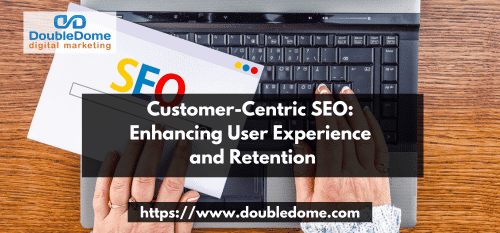In the ever-evolving world of SEO, one thing remains constant: the focus on enhancing user experience. Gone are the days when search engine optimization solely revolved around keyword stuffing and manipulating algorithms. Today, customer-centric SEO has taken center stage, emphasizing the importance of user experience and retention. This article will provide a comprehensive tutorial on how to implement customer-centric SEO strategies to improve user experience, boost website performance, and increase customer retention.
What is Customer-Centric SEO?
Customer-centric SEO refers to an approach in search engine optimization that prioritizes the needs and preferences of the target audience. It involves understanding user intent, optimizing content for user engagement, and creating a seamless user experience throughout the website. By aligning SEO efforts with user-centric principles, businesses can enhance their online visibility, attract relevant traffic, and ultimately drive conversions.
The Importance of User Experience in SEO
User experience plays a pivotal role in SEO. Search engines, like Google, aim to provide the most relevant and valuable results to their users. As a result, they consider various factors related to the user experience when ranking websites. A positive user experience leads to longer dwell time, lower bounce rates, and higher engagement metrics, all of which contribute to improved organic rankings. Furthermore, satisfied users are more likely to become repeat visitors and loyal customers, driving business growth and increasing retention rates.

Understanding User Intent
To create a customer-centric SEO strategy, it is crucial to understand user intent. User intent refers to the purpose or goal behind a search query. By analyzing user intent, businesses can tailor their content and optimize their website to fulfill users’ needs effectively. There are three main types of user intent: informational, navigational, and transactional. Crafting content that aligns with these intent types ensures that visitors find the desired information, navigate through the website seamlessly, and make informed purchasing decisions.
Keyword Research with User Experience in Mind
Keyword research forms the foundation of any successful SEO campaign. When conducting keyword research, it is important to consider user experience. Instead of solely focusing on high-volume keywords, look for keywords that align with user intent and reflect the target audience’s needs and preferences. Long-tail keywords and conversational phrases are often excellent choices as they indicate specific queries and demonstrate higher user intent. Additionally, incorporating semantic keywords and related terms helps create a more comprehensive and user-friendly content experience.
On-Page Optimization for Enhanced User Experience
On-page optimization involves optimizing various elements on individual web pages to improve user experience and search engine visibility. Some key aspects to consider for enhanced user experience include:
1. Title Tags and Meta Descriptions: Craft compelling and descriptive title tags and meta descriptions that accurately represent the content and entice users to click through to the website.
2. Heading Tags (H1, H2, H3): Use appropriate heading tags to structure your content and make it easier for users to navigate and understand the information.
3. Content Formatting: Use bullet points, numbered lists, and subheadings to break up the text and make it more scannable for readers. This improves readability and allows users to find the information they need quickly.
4. Optimized URLs: Create user-friendly URLs that are concise, descriptive, and include relevant keywords. This helps both search engines and users understand the page’s content.
Mobile Optimization and Responsiveness
With the increasing use of mobile devices, optimizing your website for mobile is no longer optional—it’s essential. Mobile optimization ensures that your website is accessible and visually appealing on smartphones and tablets. It involves:
1. Responsive Design: Implement a responsive design that automatically adjusts the layout and content based on the user’s device. This provides a seamless and user-friendly experience across different screen sizes.
2. Fast Load Times: Optimize images, minify CSS and JavaScript files, and leverage browser caching to improve load times on mobile devices. Slow-loading websites frustrate users and can lead to higher bounce rates.
3. Finger-Friendly Navigation: Design your mobile site with touch-friendly navigation elements such as large buttons and easy-to-click links. This makes it easier for users to navigate through your site on smaller screens.
Website Speed and Performance
Website speed and performance are crucial factors in both user experience and SEO. A slow-loading website can negatively impact user satisfaction and increase bounce rates. To enhance speed and performance:
1. Optimize Images: Compress images without compromising quality, use appropriate image formats (e.g., JPEG for photos, PNG for graphics), and specify image dimensions to avoid unnecessary resizing.
2. Enable Browser Caching: Set up browser caching to store static resources on users’ devices, reducing the need to download them again on subsequent visits.
3. Minify CSS and JavaScript: Minify your CSS and JavaScript files by removing unnecessary characters and white spaces. This reduces file sizes and improves load times.
Optimizing Content for User Engagement
Engaging content is vital for capturing and retaining user attention. By optimizing your content for user engagement, you can encourage longer dwell times, increased social shares, and improved conversion rates. Consider the following techniques:
1. Compelling Headlines: Craft attention-grabbing headlines that pique curiosity and encourage users to click through and read your content.
2. Engaging Introductions: Write compelling introductions that clearly outline the value and relevance of your content. Hook readers from the start to keep them engaged.
3. Use of Multimedia: Incorporate relevant images, videos, and infographics to enhance the visual appeal and overall user experience of your content.
User-Friendly Navigation and Site Structure
A well-organized website structure and intuitive navigation are key to a positive user experience. When optimizing your site’s navigation and structure, consider the following:
1. Clear Menu and Navigation: Use descriptive labels for your menu items and ensure that the navigation is easy to find and understand. Consider using drop-down menus for large websites to simplify navigation.
2. Internal Linking: Link related pages and content within your website to help users discover more information and navigate between relevant topics.
3. Breadcrumbs: Implement breadcrumbs to show users their current location within the site’s hierarchy. Breadcrumbs improve navigation and provide context for users.
Incorporating Visual Elements for Better User Experience
Visual elements can greatly enhance user experience and make your content more engaging. Consider the following techniques:
1. High-Quality Images: Use high-quality, relevant images that add value to your content. Images can help illustrate concepts, break up text, and make your content visually appealing.
2. Infographics: Create visually appealing infographics to present complex information in a concise and easy-to-understand format. Infographics can be highly shareable and increase user engagement.
3. Videos: Incorporate videos to provide demonstrations, tutorials, or additional information related to your content. Videos can increase user engagement and enhance the overall user experience.
Building Trust and Credibility
Establishing trust and credibility is crucial for attracting and retaining users. By building trust, you increase the likelihood of users engaging with your content and taking desired actions. Consider the following strategies:
1. Testimonials and Reviews: Showcase positive testimonials and reviews from satisfied customers to build trust and credibility. Authentic feedback from real customers can instill confidence in potential customers.
2. Authoritative Content: Create well-researched and authoritative content that demonstrates your expertise in your industry or niche. Providing valuable and reliable information helps establish you as a trustworthy source.
3. Security and Privacy: Ensure that your website has proper security measures in place, such as SSL certificates, to protect user data. Display trust seals and privacy policies to reassure users that their information is safe.
Monitoring and Analyzing User Behavior
Monitoring and analyzing user behavior can provide valuable insights for optimizing user experience and retention. By understanding how users interact with your website, you can identify areas for improvement. Consider the following strategies:
1. Website Analytics: Use tools like Google Analytics to track user behavior, including page views, bounce rates, time on site, and conversion rates. Analyze this data to identify trends and make data-driven optimizations.
2. Heatmaps and Click Tracking: Utilize heatmaps and click tracking tools to visualize where users are clicking and how they are navigating your website. This information can help identify areas of interest or confusion.
3. A/B Testing: Conduct A/B tests to compare different versions of your website or specific elements to determine which performs better. Test variations of headlines, layouts, or calls to action to improve user engagement.
Customer-Centric SEO and Retention
Customer-centric SEO not only enhances user experience but also contributes to customer retention. By consistently providing valuable, user-friendly, and engaging content, you can build strong relationships with your audience. This leads to increased customer loyalty and repeat business. Moreover, satisfied customers are more likely to share your content, recommend your brand, and contribute to positive word-of-mouth marketing.
Conclusion
In the world of SEO, user experience and retention are paramount. By implementing customer-centric SEO strategies, businesses can enhance user experience, improve search engine visibility, and increase customer retention rates. Understanding user intent, conducting keyword research with user experience in mind, optimizing on-page elements, and focusing on mobile optimization are essential steps. Additionally, creating engaging content, prioritizing user-friendly navigation, and incorporating visual elements contribute to a positive user experience. Building trust and credibility, monitoring user behavior, and leveraging customer-centric SEO for retention are key to long-term success.








